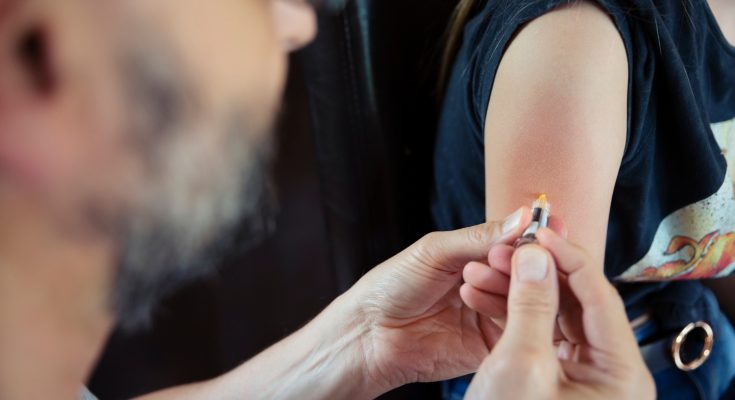What stood out was that one specific demographic was experiencing a noticeable spike in cases.
Anal cancer starts in the anal canal, which is the short passage at the very end of the digestive tract, just before the anus.
In the study presented at Digestive Disease Week, scientists reported that from 2017 to 2021, cases of anal cancer rose by 2.9 percent among women and by 1.6 percent in men.
“Rates of anal cancer are rising fastest among white and Hispanic women over 65 – groups not traditionally considered high risk,” said lead researcher Dr Ashley Robinson, who is currently in her second year of internal medicine residency at Advocate Lutheran General Hospital.

Hispanic women in the same age category weren’t far behind, with a yearly increase of around 1.7 percent.
If this trend carries on, experts believe that anal cancer cases among women over 65 could potentially double in under two decades.

Although the vaccine is widely recommended now, women in the older age group may have missed out on it when they were younger.
Most anal cancers are connected to HPV, which is a very common virus spread through skin-to-skin contact.
The HPV vaccine was first made available in the United States back in 2006.
Certain types of HPV are known to be linked to cancers such as cervical, penile, anal, and cancers in the mouth, vulva, and vagina.
The Centers for Disease Control and Prevention (CDC) advises that people up to 26 years old should get vaccinated, ideally before they become sexually active.
In the UK, kids aged 12 to 13 are routinely offered the vaccine as part of public health efforts to prevent HPV-related cancers later in life.

“These findings highlight specific patient groups who may benefit from targeted screening for anal HPV and anal cancer.”
At the moment, older women aren’t routinely screened for anal cancer. But the findings from this study suggest that screening this group might actually be helpful in catching cases early.



